► Improved interior design and more spacious accommodation
► Significantly enhanced infotainment and safety technology
► Limited performance and un-engaging driving dynamics
Daringly styled on a bulldog chewing a wasp, the first Nissan Juke had the compact crossover segment pretty much all to itself which it broke cover almost a decade ago.
And not only the public but also other manufacturers clearly thought it a good idea, because today rivals are thicker on the ground than ticks on a sheepdog – everything from Renault’s Captur, Peugeot’s 2008 and the Citroen Cactus, to the Vauxhall Mokka, Fiat 500X and Mazda CX-3.
Such a plethora of competition has forced Nissan to re-evaluate the Juke’s interior in particular, and we’re promised more room, better design and improved connectivity, with ‘the most advanced infotainment system ever fitted to a Nissan’.
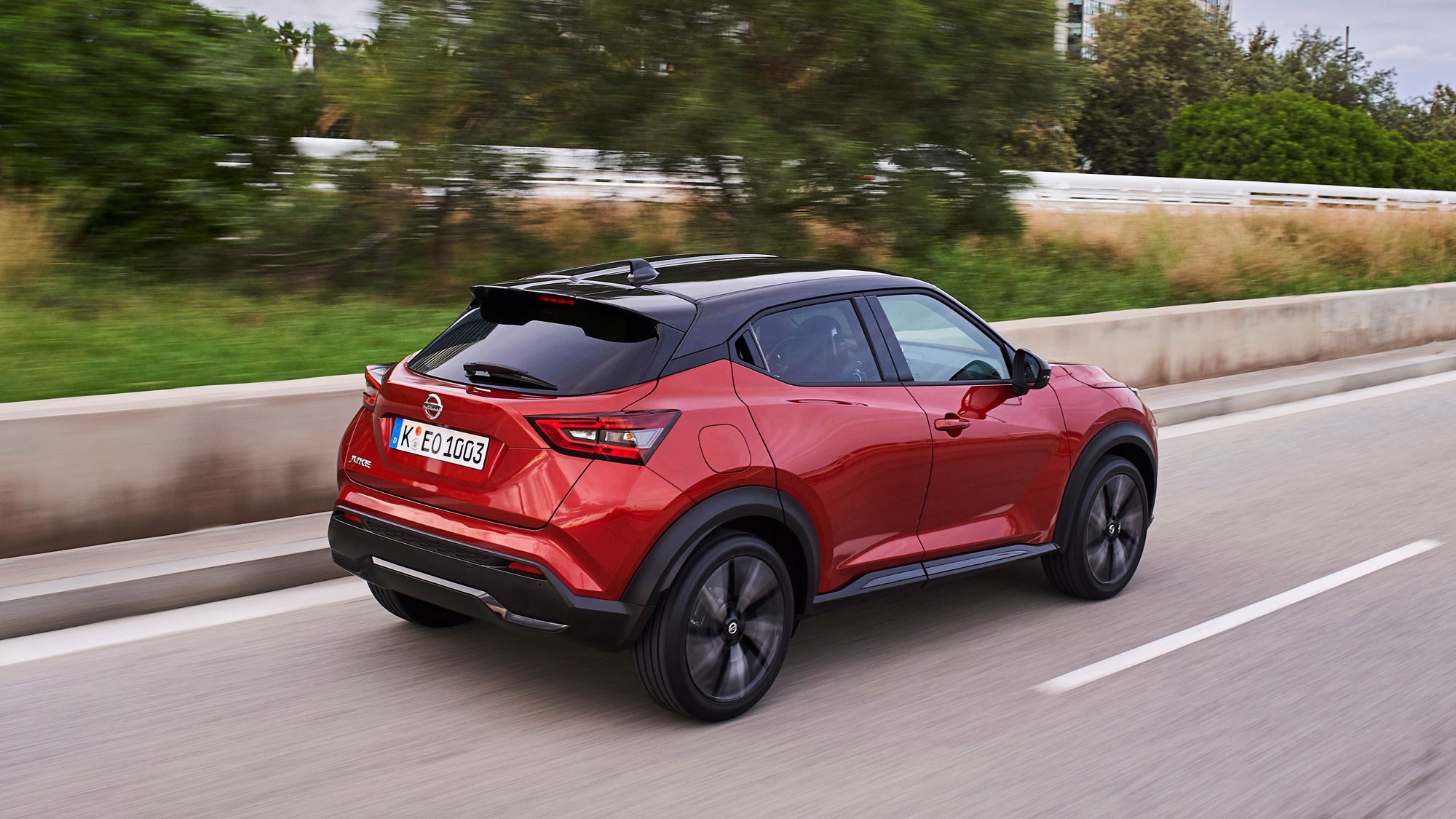
In the engine room, the Juke has so utterly succumbed to the powertrain downsizing craze that the choice of engines if, for now, no choice at all, and you may decide merely whether you want your 1.0 litre, 3-cylinder turbo petrol unit mated to a manual or automatic transmission.
Oh, and, safety equipment benefits from a predictable boost as manufacturers continue to invent ever more aids to both protect you and drive you to distraction, and Euro NCAP promptly adopts them as mandatory equipment for a 5-Star rating.
So, does the Juke still stand out in the crowd?
Frankly, no. It could be argued that anything will stand out in a crowd of one, but the first Juke undeniably had something about it.
Now, one suspects that it’s the sharp-suited Toyota C-HR that has finally got Nissan looking over its segment shoulder for the first time in a decade, though the wantonly corporate new grille and randomly creased bodywork can’t hold a candle to the surprising homogeny of the former.
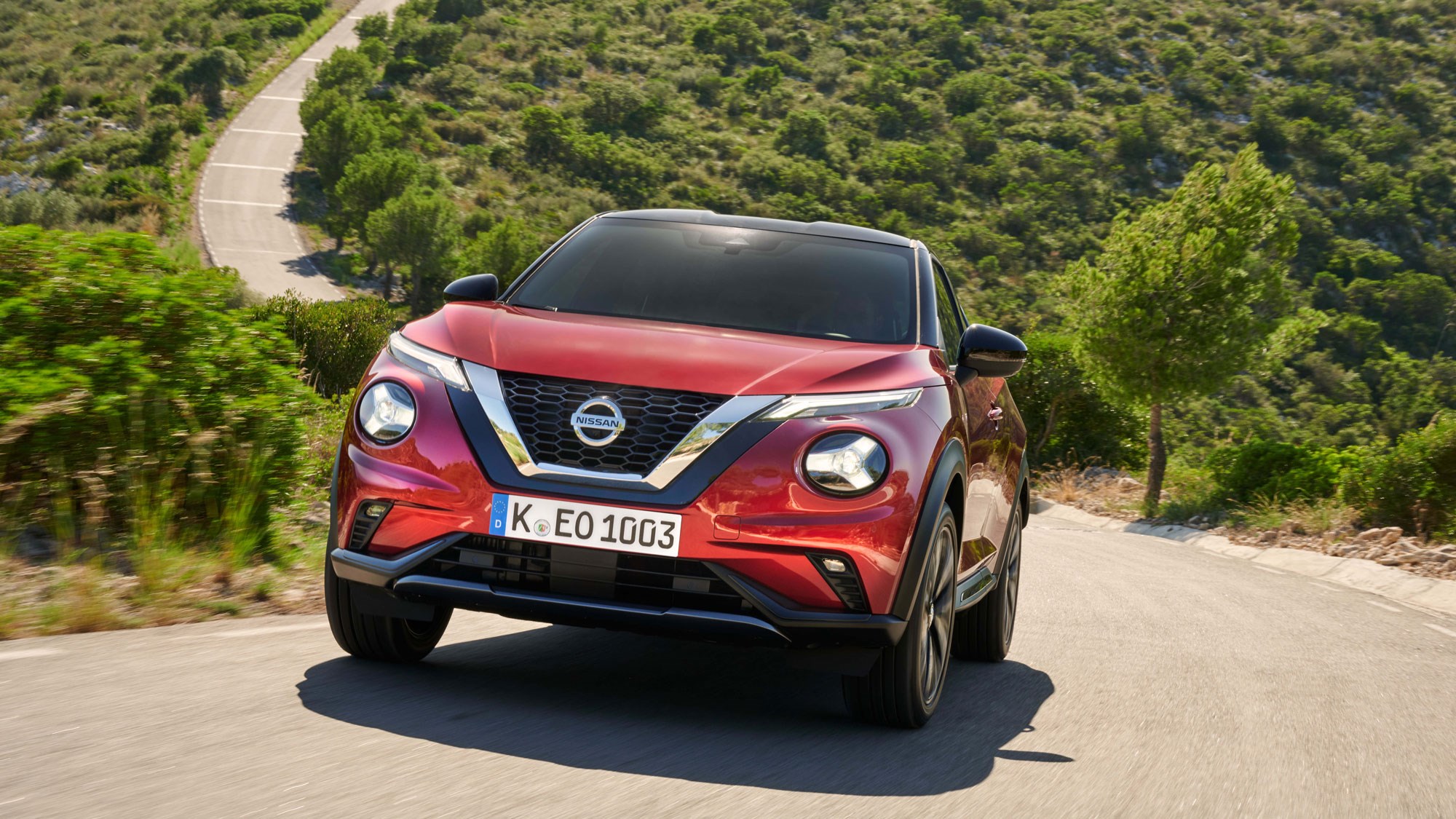
On board, however, we find a vast improvement. Not only has space for both occupants and luggage increased, with a notable 58mm extra rear seat knee room, but the dashboard and instrumentation design has taken a major bound in the right direction.
Fit and finish is largely of a high quality, though opting to waste leather that’ll never be touched on the instrument binnacle cap whilst leaving the upper door panels, which will, in scratchy plastic is something of a mystery. That said, the front seats are very comfortable and the driving position gives no cause for complaint.
And what’s with the ‘advanced infotainment system’?
Well, it may represent a pinnacle for Nissan, but the reality is probably more akin to catching up with the crowd. Top of the five grade range models, Tekna+, which we drove, come fully loaded as standard.
Hence, via an 8″ touch-screen, we find Apple CarPlay and Android Auto present and correct, TomTom Maps and Live Traffic, and a Google Assistant by which you may communicate with the car on your mobile if you can’t be bother to go outside and sit in it. Oh, and, in-car Wi-Fi is coming, but not until early next year.
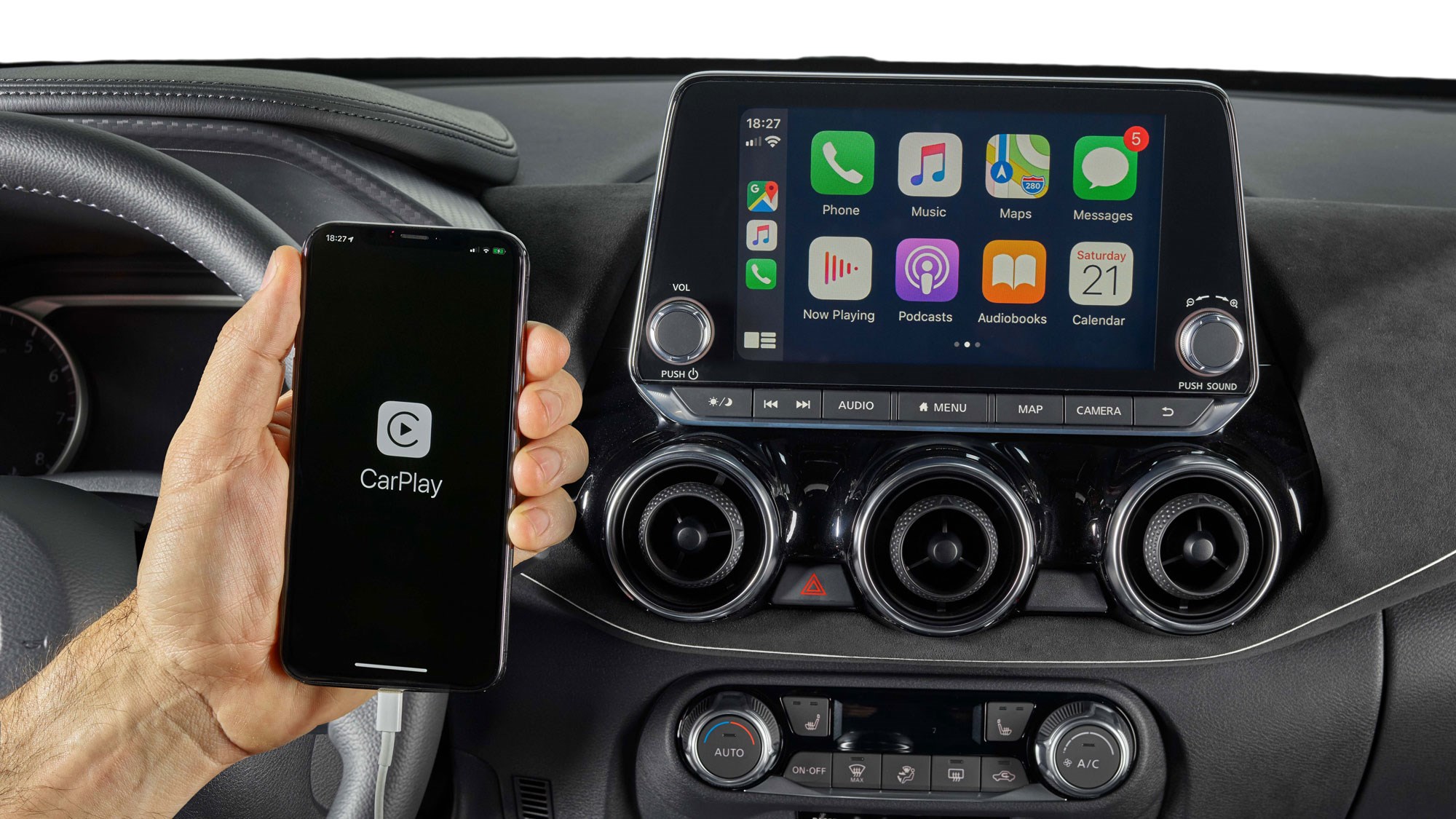
The Bose stereo, also standard fit on the highest grades, is predictably superb, and includes ‘UltraNearfield’ speakers built into both front seat headrests, so there’s no escape for your ears and the risk of extraneous noise intrusion is minimised. Which is a good thing…
How so? Is the engine noisy, then?
Nope. But wind noise from door mirrors placed too far aft for both ocular and aural comfort suddenly kicks in at 60mph, and by 70 is the predominant theme of the Juke’s progress.
As mentioned the only option offered in the engine room is whether to mate the lone 1.0 litre, 115bhp, triple-pot petrol turbo unit to a six-speed manual or seven-speed, dual-clutch automatic transmission.
The latter makes a nicely oleaginous partner to an engine which proves to be somewhat reluctant to get a wriggle on. Wafting’s fine, and the powertrain impressively quiet, but even a whiff of incline calls for a kick-down so far south on the throttle and so ineffective that you find yourself trying to push the pedal through the fire wall in the quest for more zest.
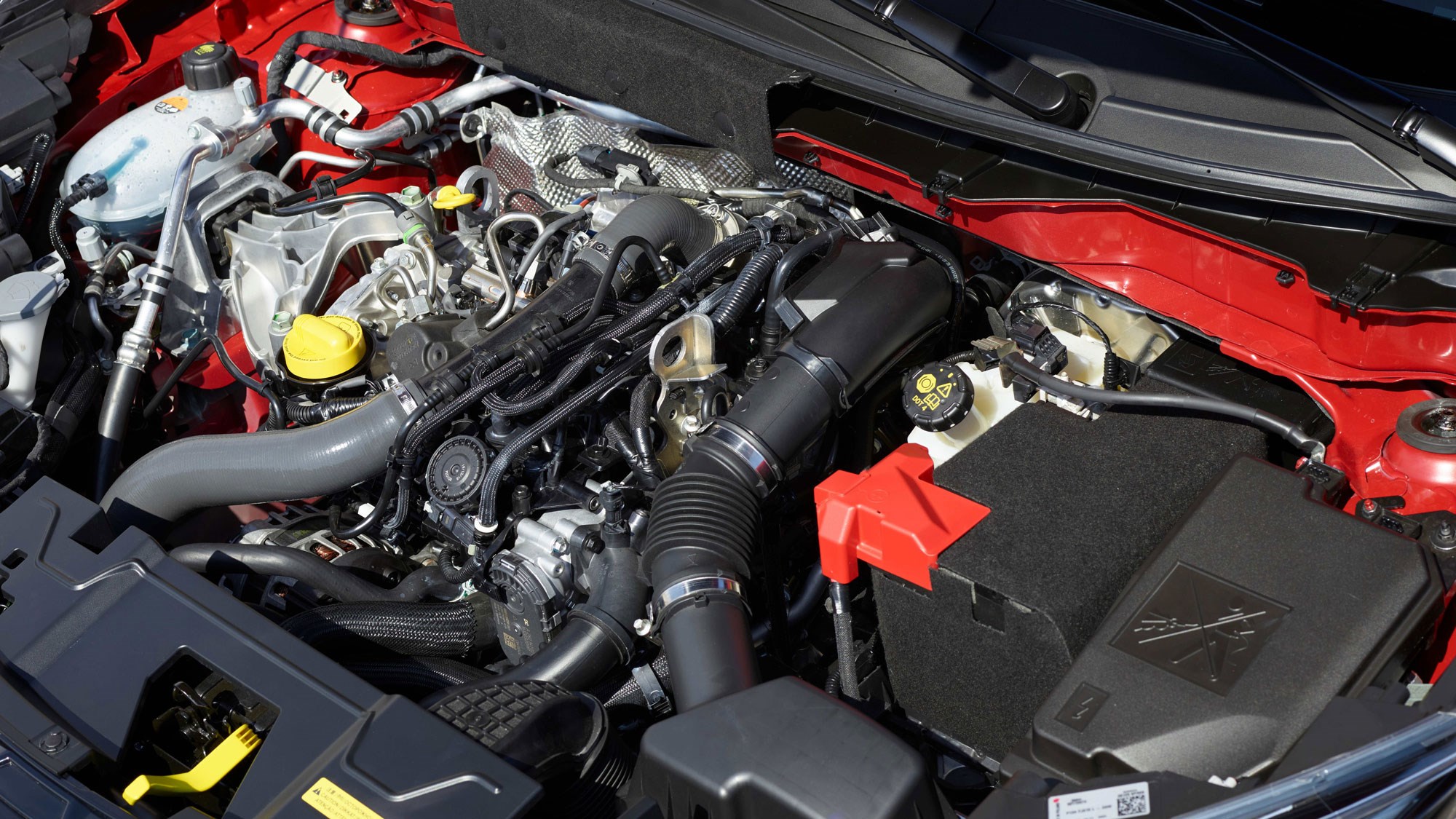
The manual gearbox makes a better fist of extracting what little the engine has to offer, but the ministrations of the turbo make for less than linear power delivery, and perceptible transmission whine builds with speed in every gear.
And the promise of agility inherent in the design?
Infotainment connectivity may have improved but, alas, for those of us who remember the entertainment provided by 1.4 litre turbo powered Jukes of yore, that between driver and road has not.
In truth, there’s little pleasure to be gained from pressing on. The steering feels stodgy and, in switchable Sport mode, over-weighted, and the Juke demonstrates all the reluctance to turn into corners of a rhino in heat, suggestive of a vehicle weight far in excess of the quoted 1182kg.
This is especially noticeable when trying to sew together a sequence of bends. The promise of agility inherent in front-wheel drive and light weight simply refuses to materialise, which is a complete mystery.
Progress is accompanied by sufficient body movement to suggest an emphasis placed on straight line ride comfort. But the dearth of rubber attendant to 19″ rims lobs lumps of iron pyrites into the porridge, which one fears will make for somewhat lumpy progress on British rubble roads.
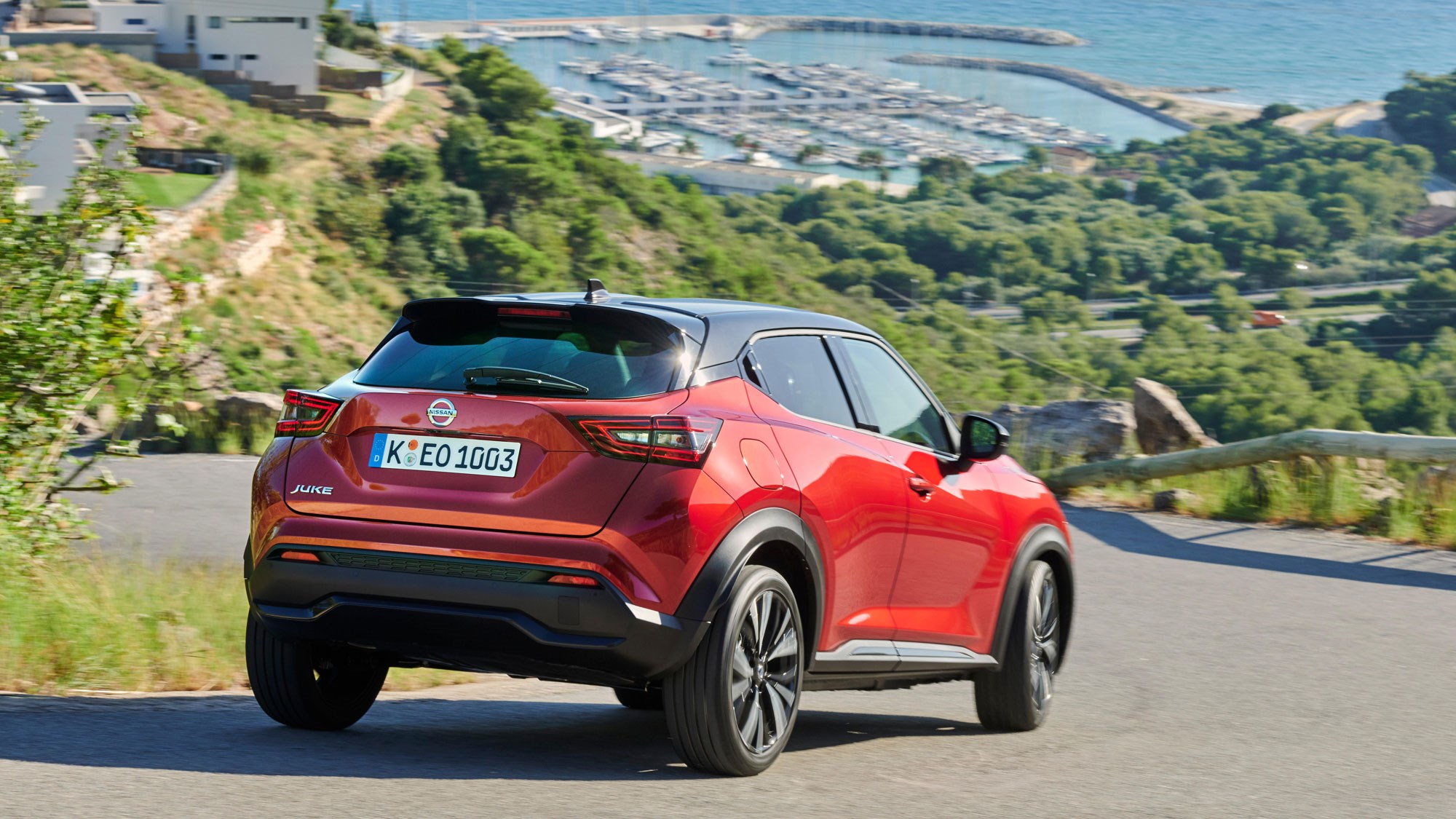
The alternative 16″ or 17″ wheels may not fill those plastic rimmed arches quite so well, but in a car clearly not majoring in performance, you may as well maximise ride comfort if you can.
You mentioned a raft of safety stuff…
Indeed. But once again we’re really just talking about catch-up rather than a blizzard of new technology.
So, welcome aboard Intelligent Emergency braking with Pedestrian and Cyclist Recognition, Intelligent Speed Assist, Traffic Sign Recognition, Intelligent Lane Intervention, Rear Cross Traffic Alert and, a first on any Nissan, Blind Spot Intervention, which nudges the Juke back into the lane you’re trying to leave if your blind spot proves occupied.
Jukes with automatic transmission also offer drivers ‘ProPILOT’ technology; a semi-autonomous system which controls the steering, throttle and brakes to maintain lane position, even in heavy traffic.
More prosaically, LED headlamps are now standard fit range-wide, boosting visibility range by 10 metres for a claimed, best-in-class field of visibility.
New Nissan Juke: verdict
Proof the engine downsizing isn’t necessarily the way forward unless pottering is your way forward, and hardly the last word in handling, the Juke offers significantly improved interior design, accommodation and infotainment countered by corporate styling, lacklustre performance and un-engaging dynamics.
If you’re not in a hurry to reach the in-laws, a £17,395 entry-level Juke makes a reasonable proposition. At £23,895, the all-singing but scarcely dancing Tekna+ variant less so.